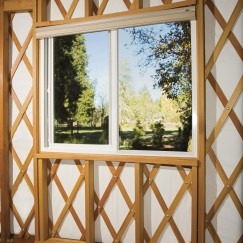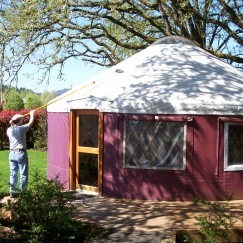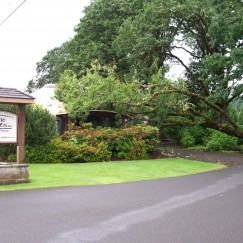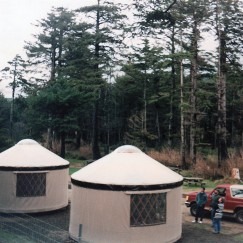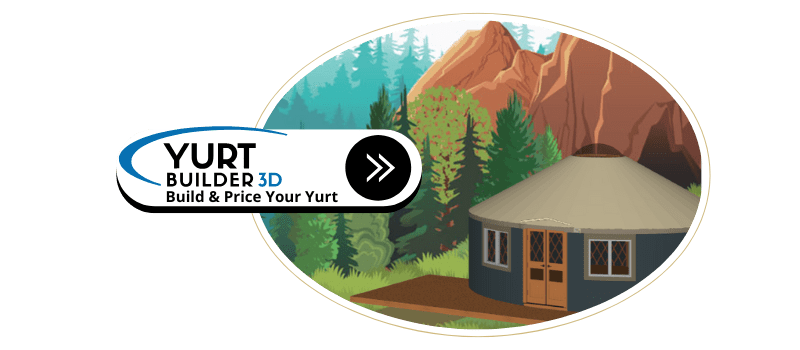What Makes a Yurt Durable? Inside the Build of a Pacific Yurt
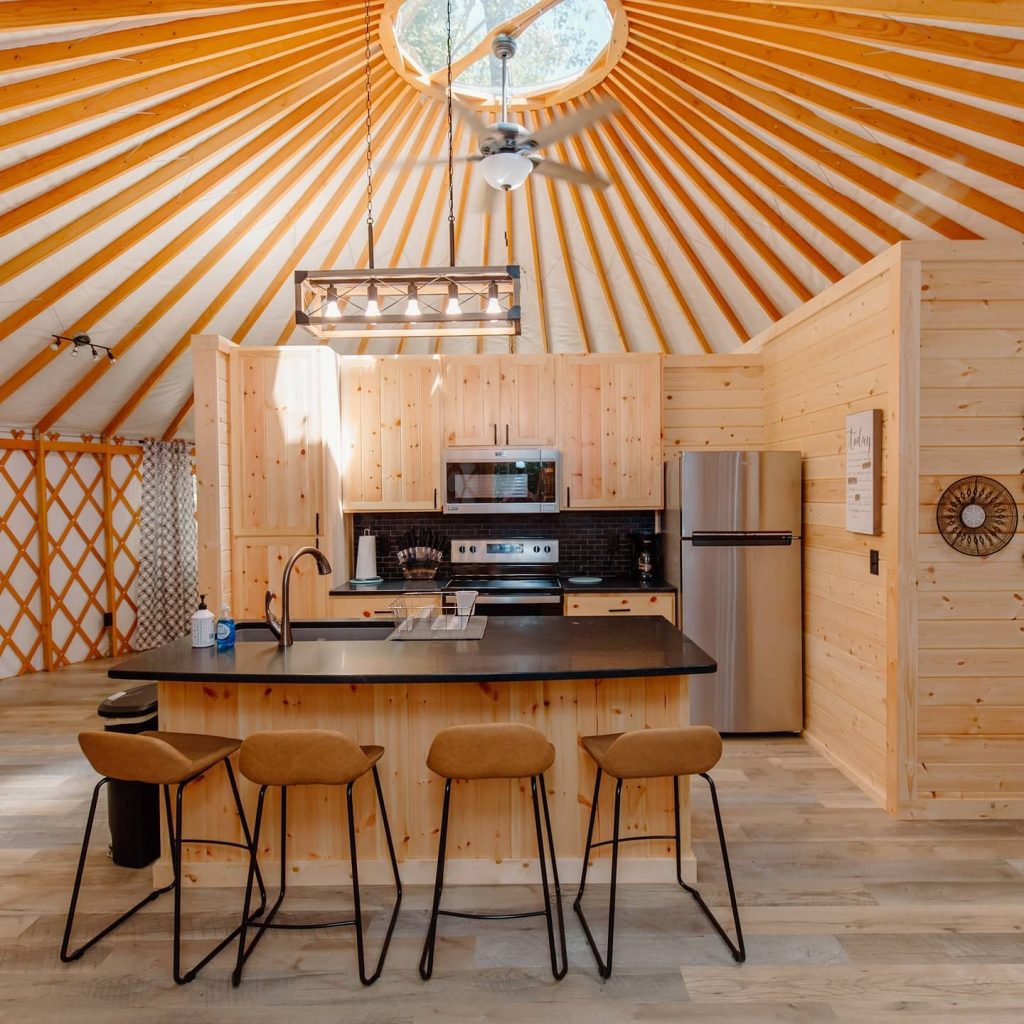
A Pacific Yurt is much more than an over glorified tent. It is a precision-built, engineered structure designed to handle real weather and daily use for years, not just one season.
Here is what is happening behind the lattice that makes that possible.
From the Frame Up: Strength in the Wood Structure
Pacific Yurts uses hand-selected, kiln-dried Douglas fir for the structural frame. The key parts work together as a tension and compression system:
- Lattice wall: A flexible wall made from Douglas fir lath, fastened with metal hardware so it can carry load without feeling rigid or fragile.
- Tension cable: A steel cable that runs around the top of the lattice and catches the outward push of the roof.
- Rafters and center ring: Structural rafters notch onto the cable and connect to a laminated compression ring at the top, which spreads the load evenly.
That system is what lets a properly engineered yurt handle wind and snow when it is matched to its site and climate.
Weather-Resistant Fabrics and Insulation
The outer “skin” has to live outside every day, so the fabrics are architectural-grade materials, not basic canvas. Roof and wall covers are designed for strength, UV resistance, mildew resistance, and easy cleaning, and they meet standard flame-resistance tests.
Standard covers typically give you many years of service, and premium roof fabrics are designed for even longer life. Inside, reflective insulation with a fabric liner helps manage heat in both hot and cold conditions and protects the frame from condensation.
For tougher environments, options like snow and wind kits, thermal glass windows, tinted or operable domes, and upgraded fabrics add another layer of resilience.
Built for Real Conditions, Not Just Fair Weather
Pacific Yurts are in use in coastal storms, high desert sun, mountain snow, and heavy-rain climates. They show up in state parks, private resorts, campgrounds, and year-round rentals because the combination of engineered wood structure and modern fabrics holds up under real guests, not just occasional use.
With reasonable care, a Pacific Yurt can remain a comfortable, secure space for decades, even in challenging locations.
Maintenance That Protects Your Investment
Durability is partly design and partly habit. Basic care goes a long way:
- Wash the roof and wall covers a couple of times a year with mild soap and water so dirt and debris do not shorten fabric life.
- Clean the dome skylight and reseat it carefully so seals stay tight.
- Inspect the frame, hardware, and tension cable periodically and tighten or replace parts as needed.
- Reseal or restain exterior wood, such as doors and exterior trim, when it starts to weather.
None of this is complicated, but it keeps the structure performing the way it was designed to.
Customizing for Your Environment
Because every site is different, long-term durability also depends on choosing the right options. That can mean:
- Heavier snow and wind hardware for mountain or coastal exposure
- Extra insulation for four-season use
- Specific fabric and window choices to handle strong sun, moisture, or cold
Matching those choices to your location lets the core design do its best work.
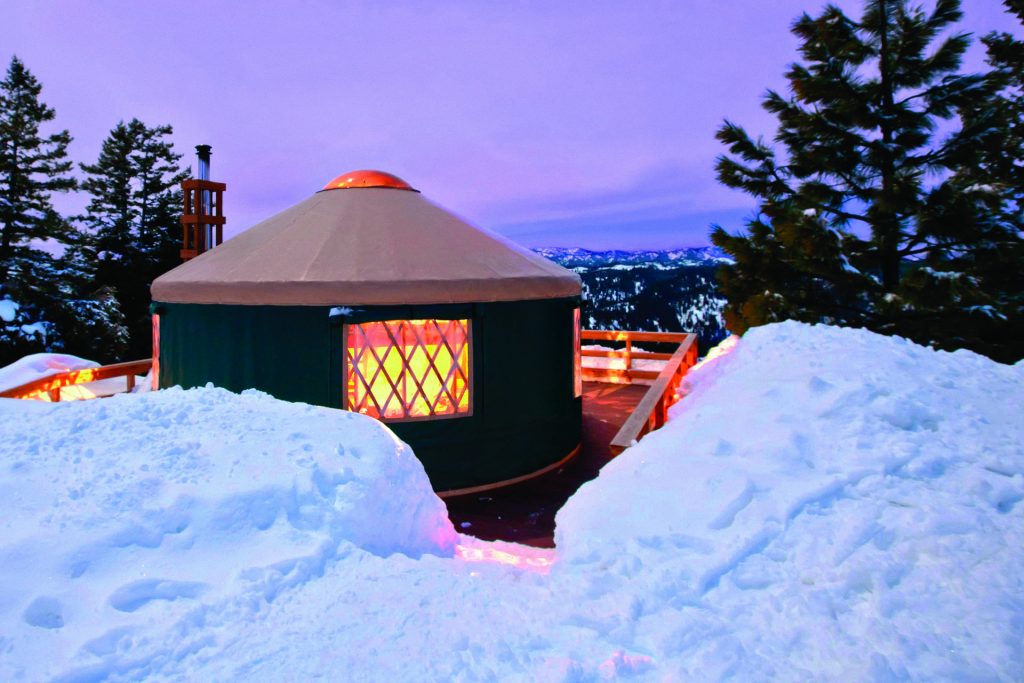
Pacific Yurts takes the traditional yurt concept and pairs it with engineered wood, modern fabrics, and smart options so the result is not just cozy today, but reliable for years.
In short, it is Oregon-built to last decades.


